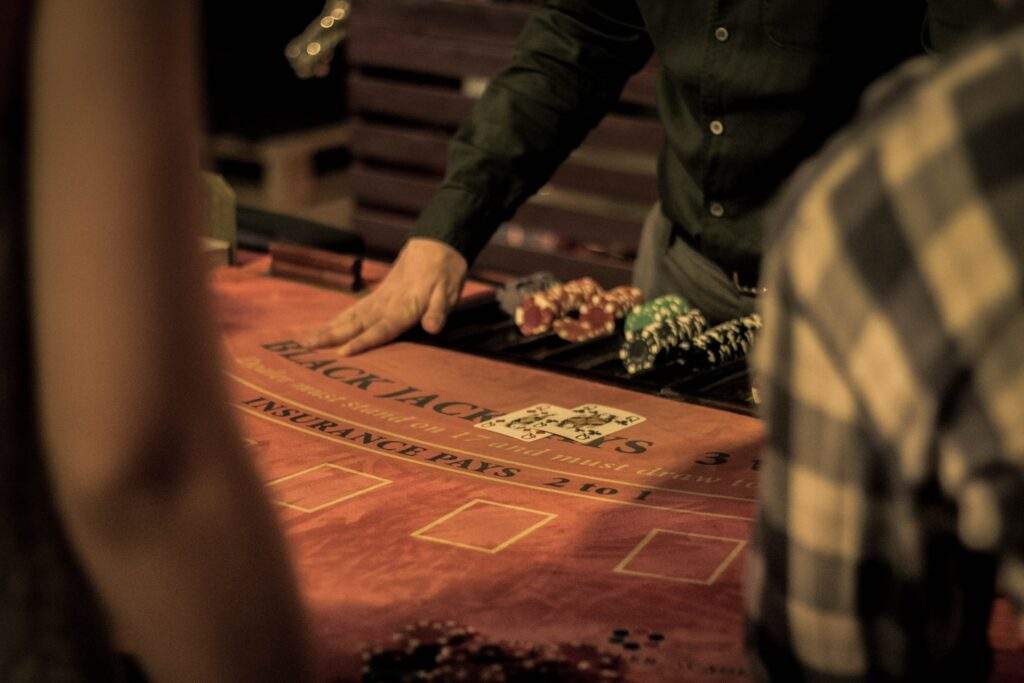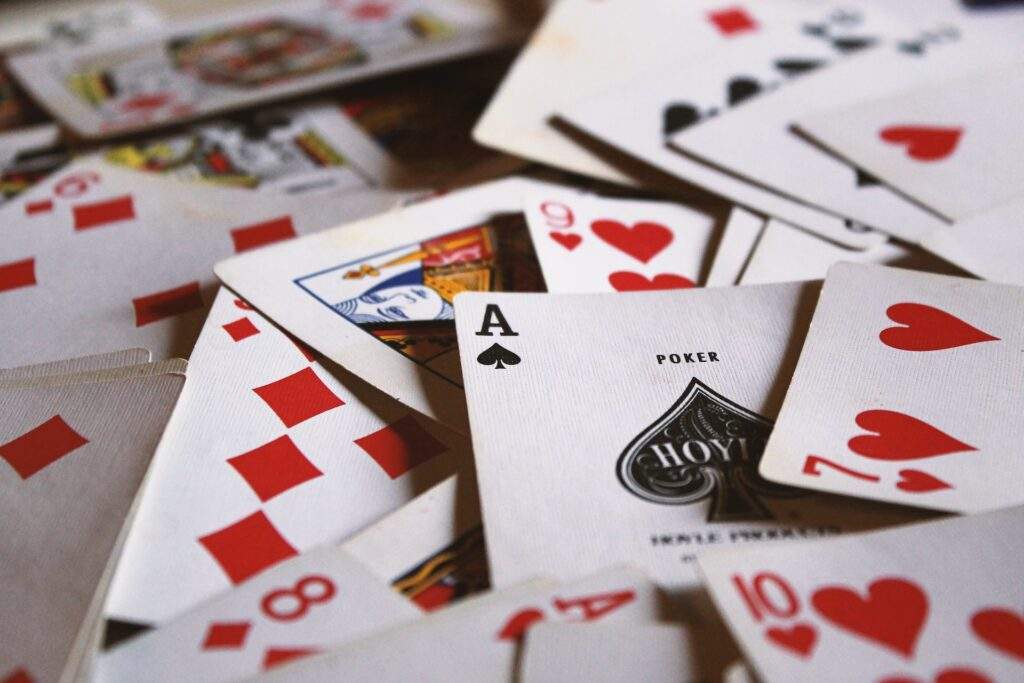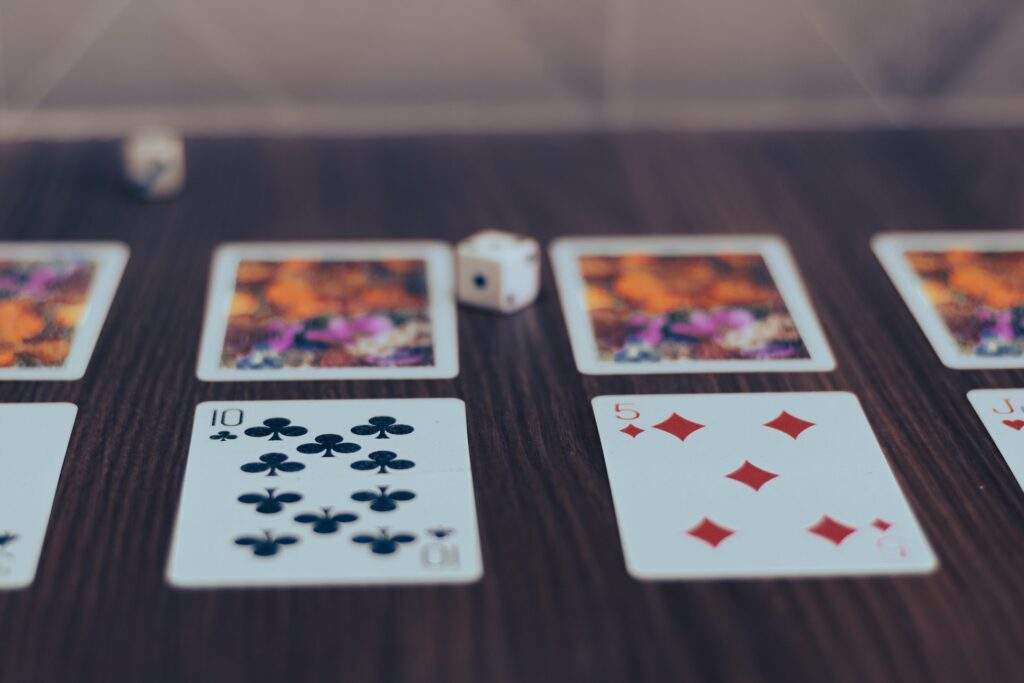Introduction:
Poker is a game of skill, strategy, and psychology. While having a strong hand certainly helps, the ability to bluff effectively can be a game-changer. Bluffing is a technique that involves making your opponents believe that you have a stronger hand than you do. It’s a calculated risk that, when executed correctly, can lead to big wins at the poker table. In this article, we will delve into the art of bluffing, exploring the tactics, mindset, and tips that can help you become a master bluffer and elevate your poker game to new heights.
Bluffing is not just about deception, it’s also about creating an image. When you make a bet that’s higher than you would normally, it gives the impression that you have a solid hand and you’re not afraid to bet big. Of course, you’ll want to do this judiciously; if you overdo it, your opponents might catch on to what you’re up to.
Although bluffing is a part of poker, it should be used sparingly. Don’t forget that your primary goal at the poker table is to make the most crushing hands, not to try and outwit your opponents. That said, if you pick up a few bluffing tips and strategies, you can increase your chances of success in different scenarios. For instance, if you bluff at the right time and against the right people, you might be able to build a pot and increase your win rate.
However, you should be aware that bluffing can backfire if you are not careful. If you begin to bluff excessively, your opponents will soon notice and this can put you in a difficult spot. On the other hand, if you bluff selectively and with strategic forethought, then it can work as an effective psychological weapon. For example, if you can deceive your opponents into folding when you have the best hand, or even into calling when you are bluffing, you can win more money than you would have otherwise. Ultimately, bluffing is a tool that can be used skillfully to increase your win rate in the game of poker.

Understanding the Art of Bluffing:
Bluffing serves multiple purposes in poker. It can be used to steal pots, build an aggressive image, induce opponents to fold, or extract maximum value from strong hands. Understanding the various reasons for bluffing and when to employ this strategy is crucial for success.
Knowing when to bluff is arguably the hardest part of the game. Bluffing works best when playing opponents who either play too many hands or are too timid in their betting. Read the table and opponent behavior carefully to gauge the right timing for bluffing. Additionally, bluffing more frequently against weaker players will yield more profitable results. Lastly, betting patterns should vary to not get too predictable. Knowing when to bluff and vary the size and frequency of bets can give you a big advantage over your opponents.
When to vary the size of bets can depend on the situation. For example, if a raise in pre-flop betting draws a call, it usually increases the likelihood of a bluff being successful. So, a larger bet may be necessary to convince a timid player to fold. On the other hand, if the betting is aggressive, smaller bets may be more effective in luring opponents into calling. These instances are just a few examples of how to adjust bluffing to suit different situations.
Reading Your Opponents:
Effective bluffing requires the ability to read your opponents and decipher their hand strength based on their betting patterns, body language, and previous actions. By paying close attention to these cues, you can gain valuable insights and make more informed decisions about when to bluff and when to fold.
Bluffing is a high-risk, high-reward move that can end with great success or great failure. When used correctly, bluffing can be an extremely powerful tool. Knowing the right moments to bluff and understanding when another player is more likely to call your bluff can be a challenge. Understanding the odds and having the ability to stay emotionally composed in difficult situations are essential qualities of a successful bluffer. Maintaining a consistent bluffing strategy and understanding when to deviate from it can also be beneficial. Finally, bluffing is an art rather than a science. Taking risks and trusting your gut feeling can often be the best course of action.
Developing an effective bluffing strategy requires significant practice and experience. Being able to accurately read the other players’ emotions and evaluate their likely strategy can be essential in understanding when to bluff. Being able to mask your own emotions and reads is also essential to keeping them guessing. The most successful bluffs often deceive the other players more than simply having the best hand. Successful bluffers are often able to push their opponents off the best hand and still get away with it.
Selecting the Right Opportunities:
Bluffing at random moments is a recipe for disaster. To bluff successfully, you must choose the right opportunities. This involves analyzing the table dynamics, considering the texture of the community cards, and assessing the playing styles of your opponents. Picking the right spots to bluff increases your chances of success.
When evaluating whether to bluff or not, it’s also important to understand the mathematical elements of the game. Bluffing is as much an art as it is a science. You need to think not just about the likelihood of your bluff working but also how much money you’re willing to put at risk, given the likelihood of your bluff working and the size of the pot. This calculation of the “expected value” of a bluff will help you become a better bluffer. It will also help you spot bluffs from other players and call them out.
However, other important components to consider when deciding whether or not to bluff are the game dynamics, your stack size, position, and other psychological aspects. Your understanding of the situation from your opponent’s perspective and formulating a plan that plays into their tendencies is a skill often overlooked. Ultimately, it’s important to remember that bluffing is a calculated move and should only be used as a last resort to win a pot or when the situation presents itself.

Building a Strong Table Image:
Your table image plays a crucial role in the effectiveness of your bluffs. If you have been playing tight and conservative, your bluffs are more likely to be successful as opponents perceive you as having strong hands. On the other hand, if you have been bluffing frequently, your opponents may be more inclined to call you down. Building a strong table image through strategic play can set the stage for successful bluffs.
If you can successfully establish a table image of strength and make opponents think twice before calling, then they may be more likely to fold when you bluff. Taking a well-timed risk can sometimes raise the stakes and break down opponents’ defenses when you try to take down pots with big bluffs. Knowing how to manage your image and capitalize on that image can pave the way for successful bluffs and a profitable poker session.
When a player is stuck in a pattern of folding your bets, it is important to understand how to control the pot by adjusting your bet size. Better bet sizing can create situations where bluffing becomes more profitable. Try to vary bet sizing to ensure that your opponents are not able to create a range for your bluffs. Betting larger in some situations and smaller in others will help your opponents feel less comfortable calling with marginal hands and will prevent them from getting the correct price when they have the best hand. Taking initiative and keeping opponents guessing can create situations in which you can exploit all of the advantages of your image and take down large pots.
Mixing Up Your Play:
A predictable player is an easy target for opponents. To keep them on their toes, it’s important to mix up your play and incorporate a balanced blend of bluffing and value betting. By varying your actions and keeping your opponents guessing, you make it more difficult for them to accurately read your hand and counter your strategies.
This requires skill and experience, as falling into bad habits or too much bluffing can be detrimental to your overall success. To stay ahead of the competition, you’ll need to recognize when it is time to switch up your style and go back to basics when the situation calls for it. Learning to adapt your play and find the perfect balance between aggressive and passive strategies can help players gain a better understanding of the game and ultimately, increase their long-term win rate.
Having the ability to read opponents and adjust your strategy accordingly is also essential to becoming a successful poker player. It’s all about knowing when to make a move and when to sit back and bide your time. Knowing when to make a bluff and when to be more conservative is key to making smart decisions that will help you win more hands.
Developing a long-term strategy that takes into account your opponent’s style of play and the game situation is key to making sure your play is consistently profitable. Patiently evaluating each situation and preparing accordingly can be the difference between winning and losing in the end, It is also important to remember to have fun while playing poker, as this can be just as important to success as having a good strategy.
Managing Your Bluffing Frequency:
Bluffing too often or too rarely can be detrimental to your overall strategy. Finding the right balance is key. Varying your bluffing frequency based on the specific table dynamics and adjusting your strategy as the game progresses is essential for long-term success.
A successful bluff requires several key elements such as the right timing, table dynamics, and a convincing demeanor. If you’re too aggressive, players may catch on to your bluffs, while being too passive will make it easy for opponents to capitalize off your weak hand. To ensure success, pretend to have a strong hand by increasing your bet size while also selecting the right moments to bluff. At the same time, observe other player’s behavior during the game and act accordingly. Adjusting your bluffing frequency depending on the situation is an important strategy that can help you maximize your winnings, while also minimizing your losses.
It’s important to remember that even the best bluffers don’t win every hand. While it’s essential to refine your craft, don’t become too attached to any single bluff. By understanding when the conditions are right to attempt a bluff, you can increase your long-term success in the game. Practice and repetition are the best ways to master the art of bluffing, so take advantage of opportunities to practice outside of an actual game. After all, at the end of the day, it’s all about having the confidence, the right sets of skills, and the perfect set of circumstances to execute a successful bluff.
Understanding the Risks:
Bluffing is not without risks. It’s important to be aware of the potential consequences and the impact on your chip stack. A failed bluff can cost you valuable chips and weaken your position at the table. Understanding the risks involved and being prepared for the outcomes will help you make informed decisions and minimize losses.
Additionally, it is important to be mindful of the types of opponents at the table. Good players are well aware of the bluffing techniques and will recognize your move almost immediately. It is important to recognize the strength of your hand vis-a-vis your opponents and whether they are likely to call your bluff. This requires keen observation and assessment of the other players’ betting patterns and tendencies so that you can make an informed decision.
Finally, be sure to choose the appropriate moments to bluff. Timing is essential when it comes to bluffing and should be done when the situation is right, such as when you are perceived to have a strong hand or are holding a very weak hand and want to give off the impression of a strong one. It is also important to be aware of the mental state of your opponents as this can influence their decision to call.
Since bluffing is such a risky move, it is best to attempt it sparingly and with discretion so as not to create a reputation around the table as someone who frequently bluffs. When done correctly, bluffing can be a powerful tool in your arsenal and can be used to effectively manipulate opponents into deciding that you can take advantage of.

The Importance of Timing:
Timing is everything in poker, especially when it comes to bluffing. Waiting for the opportune moment when your opponents are more likely to fold requires patience and discipline. Timing your bluffs effectively increases your chances of success and reduces the likelihood of getting caught.
Bluffing at the wrong time can backfire in a big way. Every decision should be well thought out and based on what your opponents are doing. Observing their betting patterns will help you identify when they are the most vulnerable, allowing you to time your bluffs accordingly. The best bluffers know when and how to apply pressure on other players to make them fold their hands. Remember, success in poker is often determined by the timing of your decisions.
Making quick decisions in poker is often a recipe for disaster; patience is key. Before deciding whether or not to bluff, it’s important to assess the table. What cards are being dealt? What is the collective attitude of the players? Analyzing the situation carefully will provide you with information that can be used to formulate an effective bluffing strategy. When playing any form of poker, remember to exercise caution. Bluffing can be a powerful tool; however, it can also be used against you. When bluffing, make sure the risk is worth taking, as it could be your last move in the game.
Practicing and Refining Your Skills:
Bluffing is an art that requires practice to master. Engage in regular poker sessions, both online and offline, to hone your bluffing skills. Learn from your experiences, analyze your plays, and make adjustments to your strategy. The more you practice, the more comfortable and confident you will become in executing successful bluffs.
Always remember that bluffing can be a very effective tool, but it should be used sparingly and judiciously. Don’t be overly aggressive in trying to bluff too often. Know the players at the table with you and be observant to spot patterns in their folding and bluffing frequencies. Use calculated risk and aim to maximize your expected value. With the right approach, successful bluffing can provide you with a huge edge over your opponents.
Additionally, pay attention to your behavior, timing, and any tells you may have. Make sure you are not exhibiting any behavior that could give away your intentions or hands. This will help you avoid being picked off by a more experienced player. The more you practice and become familiar with bluffing, the more natural it will become. Utilize strategies like combining bluffs with semi-bluffs and mixing up the size of your bluffs. You should also be aware of when to move away from your original strategy due to changing table dynamics. Finally, most importantly, have fun and don’t worry too much about the outcome. Enjoy the game and understand that sometimes the best bluffs are those that don’t get caught!
Conclusion:
Mastering the art of bluffing is a vital skill for any serious poker player. By understanding the purpose of bluffing, reading your opponents, selecting the right opportunities, building a strong table image, and managing your bluffing frequency, you can become a formidable force at the poker table. Remember, bluffing is not about reckless deception but a calculated strategy based on observation and analysis. With practice, patience, and a keen understanding of the game, you can elevate your poker game and become a master of the art of bluffing.
Most people view bluffing as a last resort, and while it is not wise to bluff too often, a well-timed bluff can be the difference between a mediocre and a winning hand. Learning to recognize bluffing opportunities and to properly execute a bluff can take your game to the next level. A great way to practice bluffing is to play online poker. With online poker, it is easier to recognize patterns in your opponents’ behavior and strategic bluffs can be employed without fear of tipping off your true intentions with physical tells.
As with any poker skill, learning the art of bluffing takes practice and dedication. With time and effort, you can learn to tackle any opponent at the felt and take your poker game to the highest level.